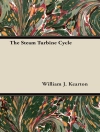This book is an overview of latest successes and applications of fuzzy techniques—techniques that use expert knowledge formulated by natural-language words like ‘small’. Engineering applications deal with aerospace (control of spacecrafts and unmanned aerial vehicles, air traffic control, airport passenger flow predictions), materials (designing gold nano-structures for medicine, catalysis, and sensors), and robot navigation and manipulation. Other application areas include cosmology, demographics, finances, wine production, medicine (diagnostics, epidemics control), and predicting human behavior.
In many cases, fuzzy techniques are combined with machine learning AI. Due to natural-language origin of fuzzy techniques, such combination adds explainability (X) to AI. This book is recommended to students and practitioners interested in the state-of-the-art fuzzy-related XAI and to researchers willing to take on numerous remaining challenges.
Mục lục
Forcing the Network to use Human Explanations in its Inference Process.- Fuzzy Inference System-based Collision Avoidance of Unmanned Aerial Vehicles Optimized using Genetic Algorithm.- Fuzzy Logic-aided Inverse Kinematics Control for Redundant Manipulators.- Growth Kinetics of Gold Nanoparticles via p-fuzzy systems.- Optimization of Artificial Potential Field using Genetic Algorithm for Human-aware Navigation of Autonomous Mobile Robots.- Genetic Fuzzy Threat Assessment for Asteroids 2600 Derived Game.- Deep Learning ANFIS Architectures.- A Fuzzy Inference System for an Optimal Spacecraft Attitude State Trajectory.- Faster Algorithms for Estimating the Mean of a Quadratic Expression under Uncertainty.- People Prefer More Information About Uncertainty, But Perform Worse When Given This Information: An Explanation of the Paradoxical Phenomenon.












